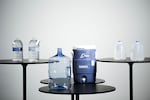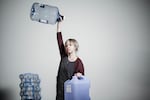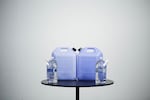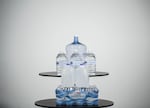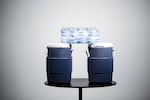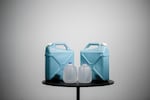
14 Gallons of water.
John Rosman / OPB
When the Cascadia Subduction Zone earthquake strikes, everyday life in the Pacific Northwest will change dramatically. Oregon's infrastructure is woefully out of date for the event.
It will take a while for supplies to trickle in to those affected. Experts say it could take two weeks. That means you should have your own supply of water ready.
Last year, OPB kicked off the #14Gallons challenge. The initiative sought to raise awareness about how much water a single person needs to be prepared for the earthquake. The Red Cross recommends 1 gallon of water per person per day. That means you need 14 gallons of water per person.
One of the big questions we received was: How do you store all this water? The answer is simple and a little complicated — wherever you can.
Buying that much water (56 gallons for a four-person household) gets expensive. It's possible to save money by storing tap water. But you need to be careful. Our partners at Regional Water Providers Consortium made a video showing safe practices bottling water from the tap.
There's also a few hidden sources of clean water in your home. When the earthquake strikes, after turning off your main gas line, here are some places to look to secure water.
Storing and preparing that much water is complicated. Here's a helpful website that should answer most questions. But if you have one that's unaddressed, feel free to reach out at anytime: webstaff@opb.org.
Aftershock
A magnitude 9.0 earthquake off the Pacific Northwest coast could hit at any time.
Enter your Oregon address for a custom report on your seismic risks and how to prepare.


